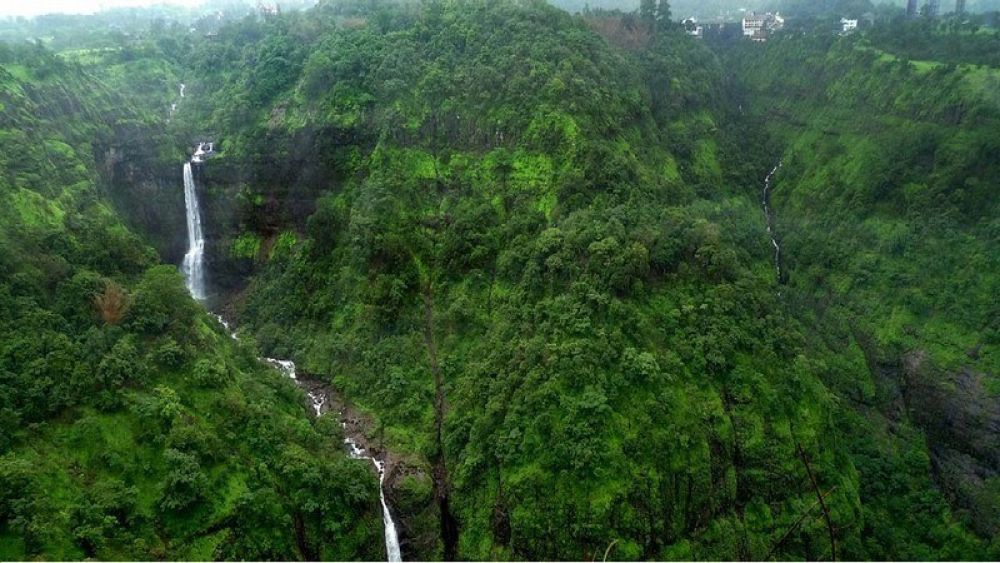

Kune Waterfalls, nestled in the Sahyadri range in Khandala, Maharashtra, has been a scenic retreat for nature lovers for several decades. Dotted with lush greenery and cascading waters, this natural wonder dates back to times immemorial, but it became notably recognized as a tourist spot in the late 20th century. The development of the Mumbai-Pune Expressway and better rail connectivity has made Khandala, and consequently, Kune Waterfalls more accessible, thus encouraging tourism.
The waterfalls hold a special place in the hearts of the locals who have long revered the area for its natural beauty and its role in local folklore. Over time, word of the stunning 100-meter drop of the waterfalls has spread, attracting tourists from all over India and beyond. In recent years, the site has been developed with visitor amenities while maintaining its natural splendor, cementing its status as a must-visit destination on the itineraries of travelers exploring the Western Ghats.
As of the most recent trends, experiential and eco-tourism have seen a rise in the area around Kune Waterfalls. Travelers are increasingly seeking out immersive experiences that also promote sustainability. This has led to the establishment of several eco-friendly resorts and nature camps in the vicinity that offer guided tours, trekking expeditions, and educational programs about the local ecosystem.
Adventure tourism is also gaining momentum, with the falls serving as a backdrop for activities such as rappelling and zip-lining during the monsoon season when the water is at its most potent. The emphasis on safety and environmentally sensitive practices during these activities is at an all-time high, appealing to a growing segment of responsible travelers.
The Maharashtra Tourism Development Corporation (MTDC) has played a significant role in promoting Kune Waterfalls, highlighting it as part of the scenic routes and monsoon getaways in the state. With social media's influence, the waterfalls have also become a popular spot for photography enthusiasts, further bolstering its reputation as a picturesque locale.
The latest phenomenon of workcations, where individuals mix work and leisure travel, has seen Khandala, and by extension Kune Waterfalls, emerge as a preferred location due to its serene environment and connectivity. The advent of the pandemic has only amplified this trend, with people seeking solace in nature while continuing to work remotely.
To cater to the ever-evolving demands of tourists, local authorities have been keen on maintaining paths and viewpoints, ensuring visitor safety, and preserving the natural beauty of Kune Waterfalls. Efforts have been undertaken to strike a balance between development and ecological conservation, aiming to sustain Kune Waterfalls as a cherished destination for future generations.
Kune Waterfalls continues to enchant visitors with its majestic falls and the verdant surroundings. The blend of its historic appeal and the incorporation of contemporary tourism trends ensure that the area remains a prominent highlight in the realm of Maharashtra’s tourism. Khandala and Kune Waterfalls, with their lush landscapes and cascading waters, offer a timeless retreat for all who venture there.